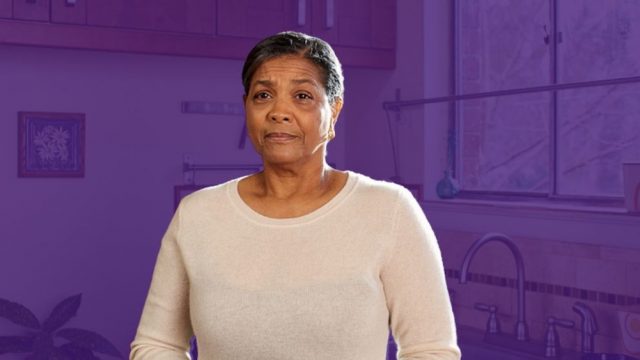New analysis: Medicare reforms will lead to continued affordability challenges, despite increased medication uptake and adherence
Editorial note: Some figures in this announcement were updated on November 15, 2023, given new data. However, the overall projections and findings remain the same.
The PAN Foundation, one of the nation’s largest and most trusted charitable patient assistance organizations, today announced new findings that spotlights both medication adherence changes and the continued affordability challenges facing individuals enrolled in Medicare Part D, despite the historic reforms included in the 2022 Inflation Reduction Act (IRA).
The analysis, conducted by Avalere and sponsored by PAN, found that while the Part D redesign could reduce out-of-pocket costs for non-low-income subsidy beneficiaries in some scenarios and increase prescription uptake, the financial burden will remain acute for many—particularly among those within certain therapeutic areas and the most at-risk patients (e.g., lower-income, Black, and Native American patients).
Building on Avalere’s initial research from earlier this year, this new study explores the potential impact the Medicare Part D reforms could have on non-low-income subsidy patients taking medications within eight therapeutic areas, including asthma and COPD, autoimmune diseases, blood thinners, cancer, diabetes (non-insulin), eye medications, HIV, and multiple sclerosis in 2025. Avalere examined these impacts when incorporated potential beneficiary and plan behavioral responses to these reforms. The analysis assumes conservative, or low level, estimates of beneficiary utilization and plan formulary management responses.
Key findings
More patients will be able to start and stay on prescription drugs
- Avalere projects the number of 30-day prescriptions for drugs within the eight therapeutic areas to increase between 2 to 28 percent following implementation of the 2025 reforms, which points to more patients starting and staying on their prescribed medications.
- Most notably, the number of 30-day prescriptions for drugs to treat asthma and COPD are expected to increase by 28 percent, indicating that many more patients living with these conditions will start and stay on their prescribed treatment.
- However, if plans are more restrictive in their formulary management response, utilization uptake may be limited.
Patients in key therapeutic areas examined will reach the annual cap in a conservative scenario
- Although the Medicare Part D reforms are expected to reduce out-of-pocket costs for non-low-income subsidy beneficiaries across the therapeutic areas examined in a conservative response scenario, most patients taking medications for an autoimmune condition (94 percent), multiple sclerosis (89 percent), and HIV (87 percent) will have out-of-pocket spending of more than $1,750 in 2025.
- However, it’s possible that in a medium response scenario, out-of-pocket cost savings may be more limited, and in some therapeutic areas, out-of-pocket costs may even increase.
In a conservative estimate, about 182,000 patients across the eight therapeutic areas analyzed will still spend more than 10 percent of their income on out-of-pocket prescription drug costs, leaving them underinsured
- About 182,000 unique non-low-income subsidy patients across the eight therapeutic areas analyzed will likely spend more than 10 percent of their estimated annual income on out-of-pocket costs for prescription medications each year, leaving them effectively underinsured and at increased risk of delaying or forgoing treatment. In a medium level response scenario, this number could increase to 410,000 beneficiaries.
- These affordability challenges are estimated to disproportionately affect patients with incomes just above the low-income subsidy threshold—between 150 percent and 300 percent of the Federal Poverty Level.
- Significant shares of patients with lower incomes who are taking therapies for HIV (22.0 percent), autoimmune diseases (20.2 percent), and multiple sclerosis (18.4 percent) are projected to have out-of-pocket spending greater than 10 percent of their income in 2025 and beyond.
- While the percentage of all Medicare beneficiaries taking an autoimmune therapy who are Black is 3 percent and Native American is 1 percent, these figures significantly increase when considering those projected to have annual out-of-pocket costs representing more than 10 percent of their income—increasing to 12 percent for Black beneficiaries and 4 percent for Native American beneficiaries. This speaks to the outsized affordability challenges that some patient populations will continue to face.
“While the Medicare Part D reforms included in the Inflation Reduction Act have great promise, this analysis reinforces that life-saving treatments will still be out of reach for too many patients,” said Kevin L. Hagan, President and CEO of the PAN Foundation. “In fact, more than 75 percent of patients nationwide tell us that it will be somewhat or very difficult for them to pay up to $2,000 each year in out-of-pocket costs for their prescription medications. By showcasing how the Part D redesign will impact beneficiaries across specific therapeutic areas, Avalere’s latest research helps to meaningfully quantify the extent of ongoing patient need—and the critical role that charitable patient assistance foundations like PAN will continue to play to provide equitable access to treatment.”
Additional findings
There will be continued affordability challenges due to high out-of-pocket costs late in the year
The latest Avalere research also underscores the extent to which many patients enrolled in Medicare Part D may not fully benefit from the Medicare Prescription Payment Plan, formerly known as “smoothing,” because they have high out-of-pocket costs later in the year.
For example, the analysis found that about 177,000 non-low-income subsidy beneficiaries across the eight therapeutic areas analyzed are projected to incur greater than $500 of out-of-pocket prescription costs in the last three months of the 2025 plan year, with the majority of those receiving treatment for diabetes (non-insulin), blood thinners, and asthma and COPD. This means they will experience limited benefits from the Medicare Prescription Payment Plan, which is designed to help spread these costs out over time.
How plans respond to the reforms through formulary management will impact patient behaviors
Most of Avalere’s analysis reflects impacts with conservative, or low level, estimates of beneficiary utilization and plan management responses to the Medicare Part D reforms.
However, higher response scenarios—such as a medium or high level of plan and beneficiary response—may take place as stakeholders continue to adjust to these historic benefit design changes. It’s currently unknown how quickly and to what degree plans will respond, which means the impact on patient behavior may vary. For example, should plans implement higher response scenarios through formulary management, patients will be impacted more when it comes to access, affordability, and medication uptake and adherence.
Understanding the continued need for charitable patient assistance foundations
Several key insights from Avalere’s January 2023 research also remain relevant to advancing understanding about the extent of ongoing patient affordability challenges:
- More than 2.6 million non-low-income subsidy Medicare beneficiaries are estimated to have out of pocket spending high enough to reach the new $2,000 annual out-of-pocket cap on prescription medications in 2025, the year it goes into effect.
- Almost 800,000 beneficiaries in 2024 and over 200,000 beneficiaries in 2025 are projected to spend more than 10 percent of their income on prescription medication each year.
When individuals with life-threatening, chronic, and rare diseases face high out-of-pocket costs, far too many choose to delay or go without their prescribed medications. And while these impending Medicare Part D reforms will bring relief to many, others will continue to struggle. That’s why PAN will continue to be there for thousands of patients across the country each year. By helping them with their out-of-pocket costs for prescription medications, PAN allows these patients to focus on what matters most—receiving the treatment they need and deserve.
PAN also continues to advocate for improved healthcare access, equity, and affordability so that all people can live the life they deserve. Alongside its partners and grassroots patient advocates, PAN works to champion a patient-first, common sense approach to long-term policy positions because everyone deserves equitable access to affordable healthcare. Learn more about PAN’s advocacy efforts and position statements.
Further resources
- Read our follow up November 15 announcement
- View and download the analysis slides
- Read more about Avalere’s Insight
About the PAN Foundation
The PAN Foundation is an independent, national 501 (c)(3) organization dedicated to helping federally and commercially insured people living with life-threatening, chronic, and rare diseases with the out-of-pocket costs for their prescribed medications.
Since 2004, we have provided more than 1.1 million underinsured patients with $4 billion in financial assistance. Partnering with generous donors, healthcare providers and pharmacies, we provide the underinsured population access to the healthcare treatments they need to best manage their conditions and focus on improving their quality of life. Learn more at panfoundation.org.



